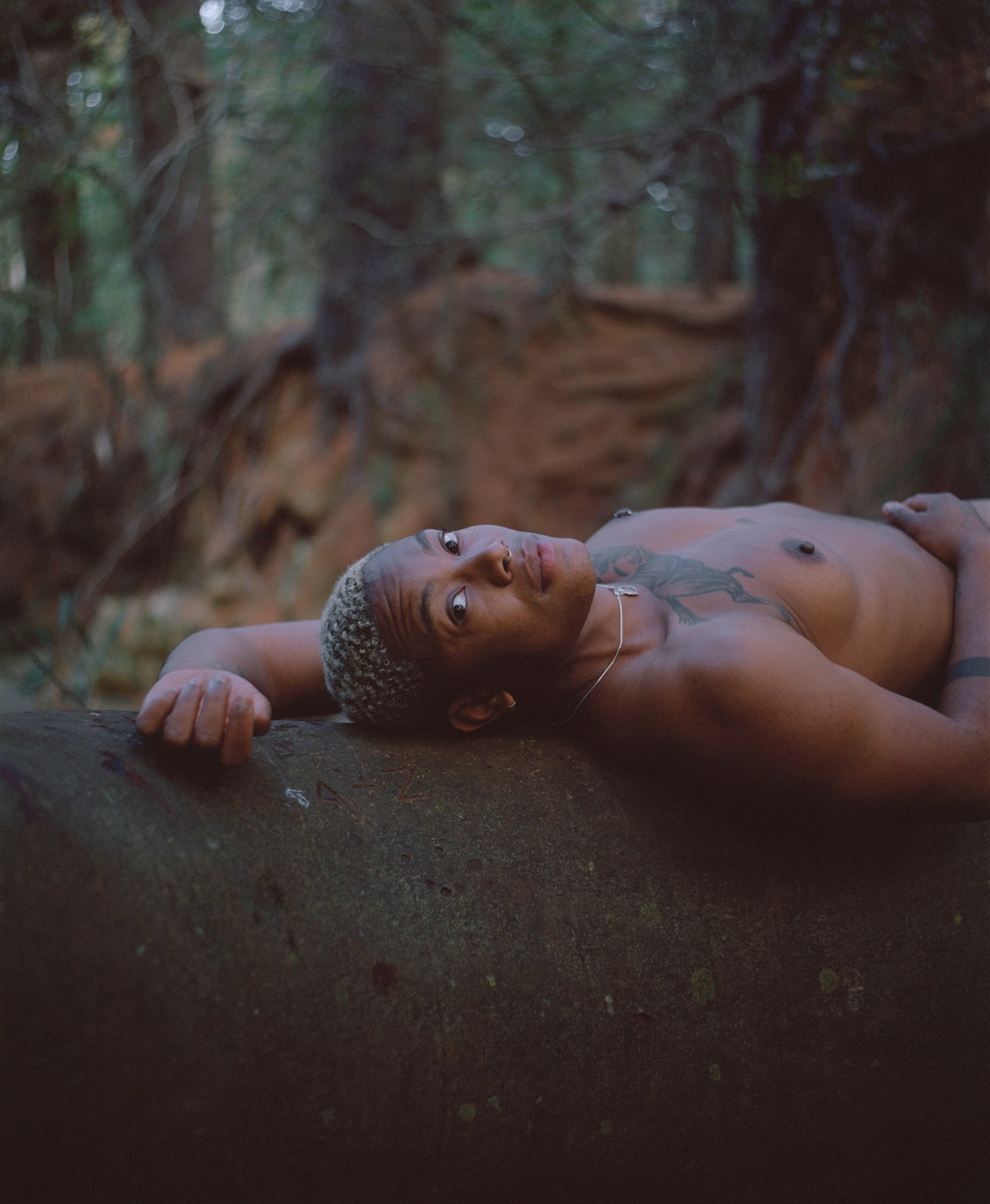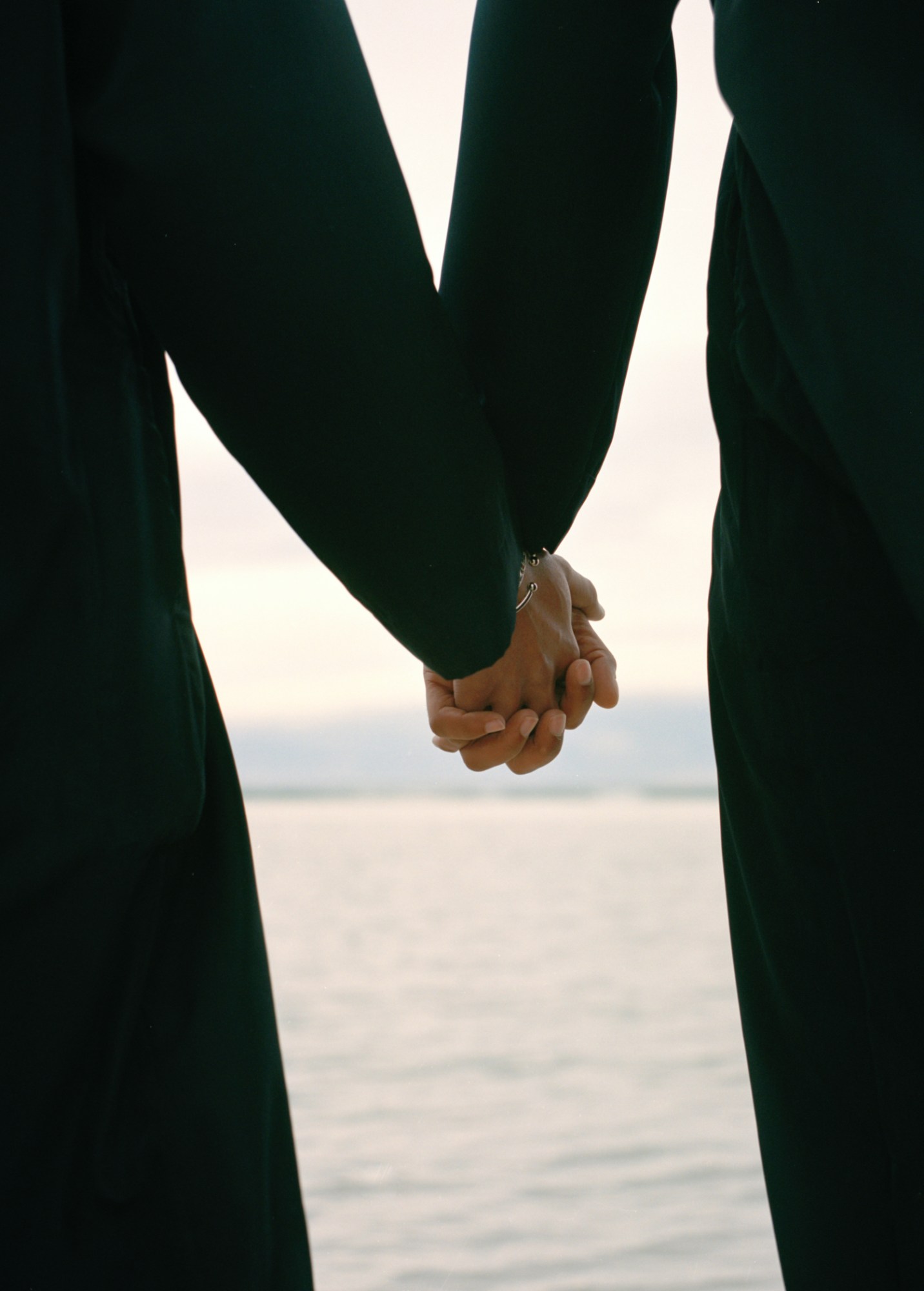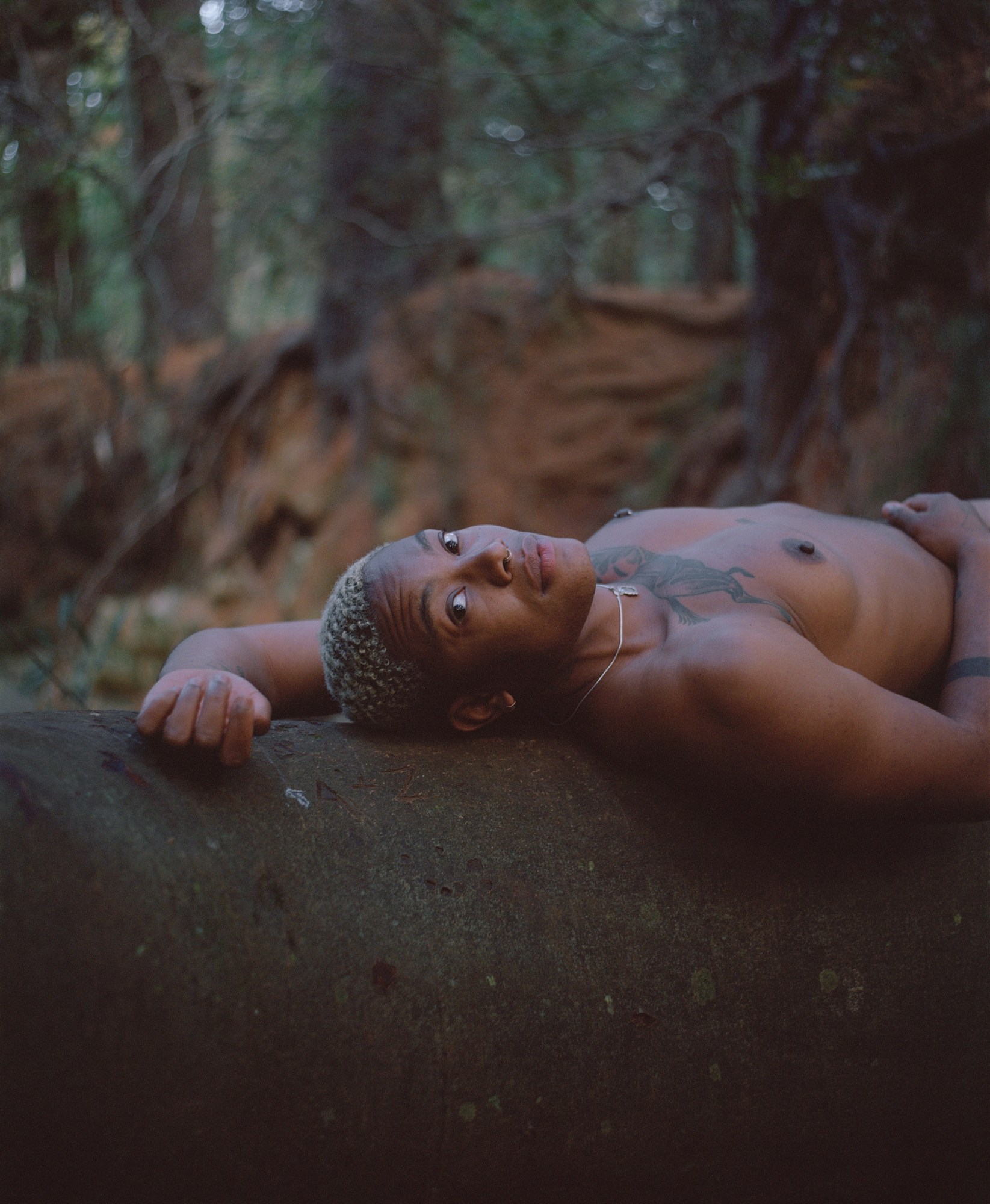The annual Taylor Wessing Photographic Portrait Prize received submissions from 1,697 photographers for its 2022 edition, three of whom were shortlisted. Clémentine Schneidermann was announced the winner last week, but it is queer South African photographer Haneem Christian whose work especially caught our eye.
Haneem proffered works from two separate series that explore the Black and brown LGBTQIA+ community, compounded by themes of chosen family and empowerment. One photograph, “Mother and Daughter,” features two trans artists, Cheshire V and Autumn May with beautiful coral-colored hair and shimmering makeup, gazing directly into the camera against a sparse cloth backdrop. The second, from the series Rooted, features a topless tattooed figure lying back confidently against a fallen tree trunk, gazing sidelong into the camera and backgrounded by a lush forest.

We spoke to Haneem about making work for one’s community, evolving ideas of selfhood, and the way nature’s spectrum matches the gender spectrum.
How did you land on photography as your medium, initially?
I was really drawn to photography during the Fees Must Fall movement [a student-led protest in South Africa in mid-October 2015 that petitioned the government to stopper rising student fees and increase university funding]. I realized how important of a tool photography is for being heard and seen.
For you, what is the crossover between aesthetics and politics in images?My practice offers a space for people who exist on the margins of society to speak their truth as they desire. I’m coming to understand the importance of photography as a tool for archiving, and how necessary it is that we archive our own stories… for writing ourselves into history. Centring queer and trans people in our telling of history offers necessary perspective. There is no such thing as “the truth” or “one truth”… people of different intersectional identities have different truths. But seeing your truth reflected in the world around you offers a feeling of belonging and that, in and of itself, is one of the most powerful things we can offer ourselves and each other. I understand representation as a catalyst.

Who were your formative photographic references?
I am really inspired by Renell Medrano, Santu Mofokeng and Camila Falquez, for their ability to tell a story really honestly.
The two images that are shortlisted stem from two different series. Can you provide context on each?
“Mother and Daughter” is one of my most loved portraits to date. It captures the light of Mother Cheshire Vineyard and Daughter Autumn May in their truest, most divine and gentle form. Mother Cheshire is one of my chosen family and an ongoing collaborator, whom I love and admire deeply. They are the mother to many queer and trans children in Cape Town — one being Autumn, who is an incredible teacher and performance artist. This body of work was birthed out of pure joy: it honors the sacred bond between a mother and daughter who have chosen one another in this lifetime.
Rooted draws parallels between the similar vastness and abundance that exists in nature and in gender-expansive people. One of the most intelligent agents used to colonize was detaching us from our sense of self. This body of work aims to retrace those pathways back to the sacred self that mirrors the abundance of nature. Rooted is actually a very simple body of work: it is about the beauty of seeing and being seen by a loved one.
I think both of these works are about honoring and celebrating the self exactly as they are. It’s about the gift of being seen in all your might.

The jury states that the works were “particularly praised… for the visible trust conveyed between sitters and photographer.” Can you describe what a sitting is like? How do you build that trust and bring that feeling of community to the next level?
My process is incredibly important — sometimes, I feel like it’s more important than the end result. I understand my practice as creating a world within this world. The process with those I collaborate with feels more like a driving force and less like an outcome. I prioritize what it feels like to be embodied in the world, and I think that shared joy is reflected back.
Before picking up my camera, I spend as much time with each sitter as possible: exploring their imagination of themselves, how they’d like to express themselves right now, as we are ever-changing. This allows us to acknowledge where we intersect, where our understandings of ourselves meet and how we can create a world together through collaborative artwork. Everyone I work with is deserving of being heard and my craft allows me to create the space for them to be seen as they desire.
Subscribe to i-D NEWSFLASH. A weekly newsletter delivered to your inbox on Fridays.
Having pursued both Gender Studies and Environmental and Geographical Sciences, can you talk about the way these two subjects cross over for you?
I think they meet in a really harmonious manner. I was really interested in spatial geography: understanding the layout of the city, how it became what it is, and why it remains as it is. Gender studies offered an explanation as to how and why certain people get to navigate space differently as a result of their identities. These subjects offered me a really intricate understanding of the power dynamics within society as a whole: the full picture regarding the ways in which our identities shape our experience of our city, and the world.

What does the Cape Town location bring to the images? Is it infused in some way?
Cape Town has housed our becoming in many ways. I guess in understanding the fact that our identities are intersectional and that every intersection influences our experience of the self, Cape Town and its complex history plays a huge role in the ways we express that self.
In the context of the Taylor Wessing Prize, your images will be viewed by the wider public, for whom queer identity and transness may not be part of their immediate status quo. What do you hope that this public might learn or understand from your images?
Honestly, I can’t say I have any hopes for those who aren’t familiar with our identities. I make work for my community, my ancestors and those who need it. At its root, my work is an offering. Whatever is received — whether it is of light or of confrontation — is out of my hands. My duty is to offer, what is done with my offering is up to those who choose to receive it.

What do you hope to communicate to viewers who deeply relate to the fragility and marginalization of queer identity in contemporary society?
I hope these images remind my Black and brown queer and trans siblings that we belong everywhere we desire to be, exactly as we are. I hope these works, in this space, remind us that our voices are important even in spaces that don’t necessarily center queerness.

The works selected as part of the annual Taylor Wessing Photographic Portrait Prize will be displayed at London’s National Portrait Gallery through December 18th.
Credits
Images courtesy of Haneem Christian
